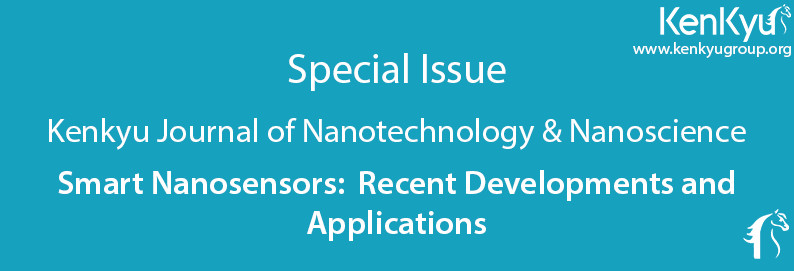
By ADMIN
Category : Special Issue

Nano-sensors (or nanomaterials based sensors) can offer many advantages over their micro counterparts, such as lower power consumption, high sensitivity, lower concentration of analytes, smaller interaction distance between object and sensor.
In case of gas sensing application, such as nanotubes based sensors, only few gas molecules could be enough to vary the electrical conductivity of sensor. Thus, they can detect chemical vapors (from explosives/drugs or volatile organic compounds) at a very low concentration. For biomedical applications, nanobiosensors could potentially be integrated with (i) self-powered bioimplantable systems, (ii) bio-implantable medical devices, (iii) bioelectronics, (iv) nanoelectromechanical systems (NEMS). Nanosensors have been used in smart structures for self-sensing and self monitoring (structural health monitoring). In addition, as can be integrated into a wireless network, nanosensors have been aslo used for monitoring environmental pollution and traffic monitoring (multiparameter nanosensors).
In logistics management, nanosensors could be used in the Active transport tracking devices for smart tracking and tracing. In agri-food productions, nanosensors are widely used for (i) monitoring soil conditions or environmental conditions at the farm, (ii) smart fertilizers (conditional release), (iii) Nanochips for identity (radio frequency identification), food inspection, intelligent food packaging, smart storage…
Beside, with the supports of Artificial Intelligence (AI) tools (such as fuzzy logic, genetic algorithms, neural networks, ambient-intelligence…), sensor systems nowadays become smarter.
This special issue aims to emphasize the fundamental design concepts and promising applications of nanosensors in smart infrastructure, logistics management, agri-food productions, gas sensing, monitoring environmental pollution, traffic monitoring, and biomedical applications.
We sincerely invite research papers, reviews, short communication and case reports addressing these issues.
Potential topics include but are not limited to the following:
Application of artificial intelligence tools for nanosensors based systems
Nanosensors for biomedical applications
Nanosensors in smart infrastructures
Nanosensors for mornitoring environmental pollution
Nanosensors for agri-food productions
Nanosensors in logistics management
Nanosensors in gas sensing applications
Nanosensors for advanced optical applications
Nanosensors for smart cities application
Editor:
Tuan Anh Nguyen, Institute for Tropical Technology, Vietnam Academy of Science and Technology, Hanoi, Vietnam; ntanh@itt.vast.vn
Guest Editors:
Baoguo Han, School of Civil Engineering, Dalian University of Technology, Liaoning, China; hanbaoguo@dlut.edu.cn
Vijay K. Tomer, Berkeley Sensor & Actuator Center, University of California, CA, USA; vjtomer@berkeley.edu
Ali Farmani, School of Electrical Engineering, Lorestan University, Khorramabad, Iran; farmani.a@lu.ac.ir



Post Comments